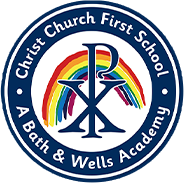Science
In our Cornerstones Curriculum, the names of the science projects are matched to the national curriculum aspects. However, in Key Stage 1, the aspect of Animals, including humans has been separated so that children study humans before expanding to explore animals.
The science projects are sequenced to develop both children’s substantive and declarative knowledge, and if possible, make meaningful links to other projects. These links allow for children to embed their substantive knowledge in new and often real-life contexts.
The sequencing of projects ensures that children have the substantive knowledge and vocabulary to comprehend subsequent projects fully. Each project’s place in the year has also been carefully considered. For example, projects that involve growing plants or observing animals are positioned at a suitable time of year to give children the best possible opportunity to make first-hand observations. Within all the science projects, disciplinary knowledge is embedded within substantive content.
In Key Stage 1, Amber Class, children begin the autumn term with the project Human Senses, learning about the senses that humans have. Building on learning year by year children learn about materials in the autumn 2 project Everyday Materials, understanding a material's properties and define its use. The spring projects Animal Parts - identify and describe their common structures, diets, and how animals should be cared for and Plant Parts - teaches children about wild and garden plants by exploring the local environment. They identify and describe the basic parts of plants and observe how they change over time. Finally in Summer, Amber Class have a double term project called Seasonal Changes which includes the children beginning to learn about the science of day and night and recognise that the seasons have varying day lengths in the UK.
Having learned about human body parts, the senses and survival in Key Stage 1, children now focus on specific body systems and nutrition in Key Stage 2.
In the autumn term of Year 4, Topaz Class, children learn about the digestive system, again making comparisons to other animals, in the project Digestive System. The second autumn term project Sound introduces the concept of sound, with children identifying how sounds are made and travel. They learn and use new vocabulary, such as pitch and volume, and identify properties of materials associated with these concepts. In the spring term project States of Matter, children learn about solids, liquids and gases and their characteristics. They understand how temperature drives change of state and link this learning to the project Misty Mountain, Winding River, in which children learn about the water cycle. Up to this point, children have had many opportunities for grouping and sorting living things. In the spring project Grouping and Classifying, children recognise this as ‘classification’ and explore classification keys. Finally, in the summer term, children study electricity by creating and recording simple circuits in the project Electrical Circuits and Conductors. They also build on their knowledge of the properties of materials, identifying electrical conductors and insulators

 Christ Church First
School
Christ Church First
School
